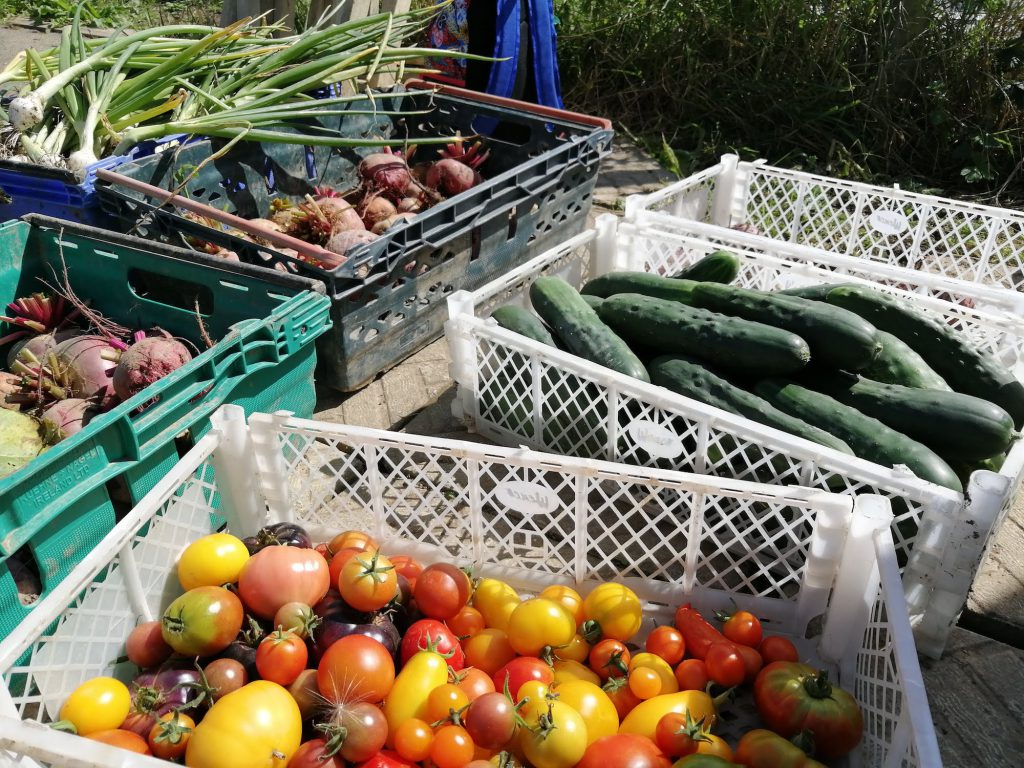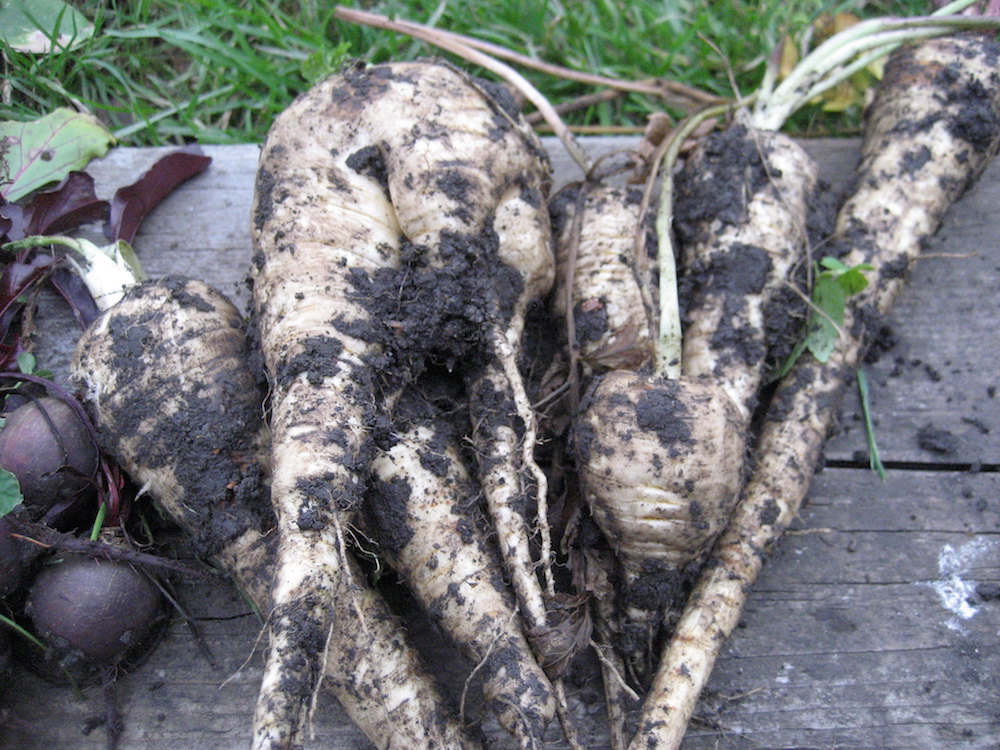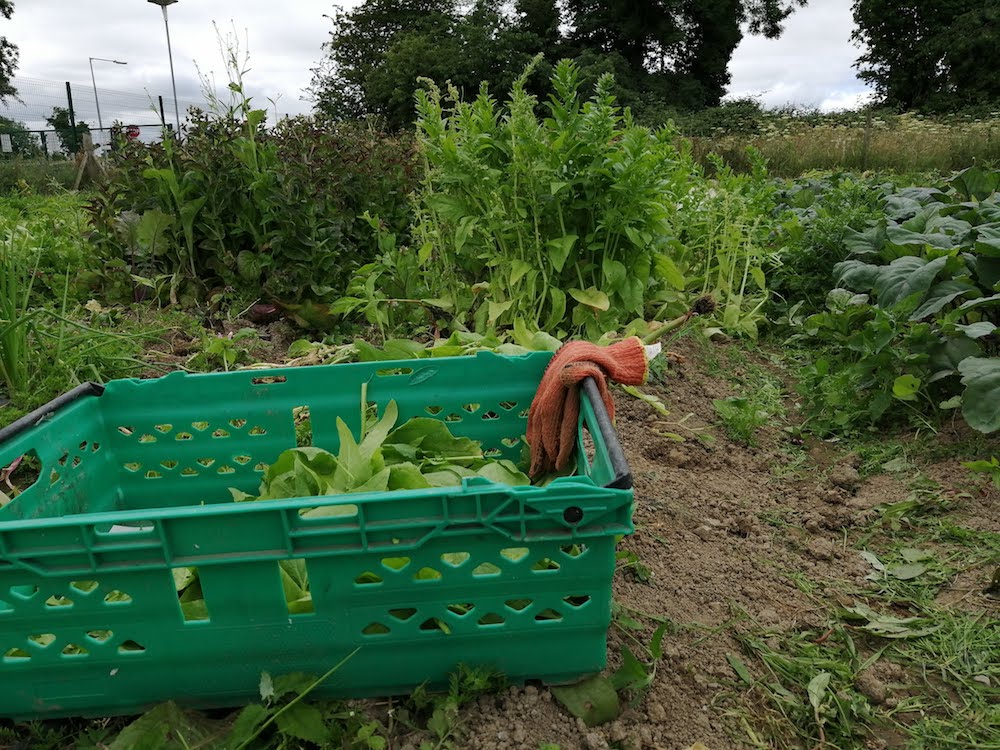What Parsnips Taught Me About Nature

As the rain fell on my hands, washing away the soil, I threw the last of the parsnips into a wheelbarrow. I was glad to see the back of them.
The parsnip is a difficult root vegetable to harvest. Brittle yet tough, it will easily snap in half if you’re not careful, but thanks to its strong roots, you can’t get it out of the dirt without breaking a sweat either. This is a fact about the parsnip you may not be familiar with; it wasn’t a fact I was aware of either until last September, when I threw my shovel and rake to the ground in frustration while wrestling with a parsnip.
I don’t like parsnips, but harvesting has given me a new appreciation for them. And a new appreciation, too, for the links that can be forged with nature through food, and the positive impacts those links can have—from environmental sustainability to human health.
These are reflections that carry an extra poignancy this year. This April marked the 50th anniversary of Earth Day, a celebration that raises awareness of environmental issues. Meanwhile, the pandemic is putting strain on some food systems and highlighting humanity’s often broken relationships with nature.
As a doctoral student of anthropology, I did fieldwork between 2018 and early 2020 on a form of alternative agriculture in a built-up suburb just outside Dublin City, the capital of Ireland. It’s called Community Supported Agriculture (CSA).
The CSA model involves a group of members who, in return for a subscription fee, receive weekly shares of the land’s produce during the farming season. This kind of farming is a rarity in Ireland, where most of the land is used for beef and dairy. The farm I spent my time at also used a number of volunteers, like myself. Everyone had their own reasons for being involved with the CSA, but there were some commonalities, from concerns around local food security to reducing one’s carbon footprint.
Once a week during the farming season, roughly between March and November, we—a group of between 5 and 10—would go out and harvest whatever produce was ready. There wasn’t a drop of artificial fertilizer on this farm or any heavy machinery, just our hand tools and hard work. I spent hours picking fruit and vegetables of all kinds, from fennel to French beans, and encountered a myriad of plant and animal life in concentrations few urbanites would be used to. We were regularly joined by Ruby, our name for a local red-breasted robin who would hop around the periphery watching for tasty treats.
It is no secret that spending time in nature is good for people, be that walking along a woodland trail, listening to the breeze rustle the leaves of the trees, sitting on a sandy beach watching the tide, or going to a local allotment to water some artichokes. Yet people in the urban Western world have become increasingly disconnected from nature—and from food.
Despite some niche movements toward urban farming, most people in the urban West are more used to gathering food from supermarkets than fields. In Ireland, farms make up 4.4 million hectares, or almost 64 percent of the country’s landmass, yet 49 percent of school children have little understanding of agriculture or farming. In Australia, another agricultural powerhouse, a survey by Rabobank found that 77 percent of urban teenagers knew little to nothing about farming either.
People in the urban West have, for a long time, looked to Indigenous and non-Western peoples for stories about nature and humanity’s place in it. In these cultures, they find a multitude of different belief systems that see nature and humanity as deeply entwined—that the health of water, plants, animals, and air are integral to human health. As Anna Lowenhaupt Tsing, a professor of anthropology at the University of Santa Cruz, California, put it in her 2015 book The Mushroom at the End of the World: Since the Enlightenment of the 17th–19th centuries in Western societies, “It was left to fabulists, including non-Western and non-civilizational storytellers, to remind us of the lively activities of all beings, human and not human.”
Perhaps there is an anthropological way of thinking that will better close that gap between nature and Western culture.
The growing and eating of food is often approached through rituals and seen as something spiritual by many Indigenous groups. The connections formed through food allow for more meaningful stories to be told. As one research group noted when studying food security of urban Indigenous peoples in Winnipeg, Canada: “The knowledge and understanding associated with growing and nurturing your own food is connected to a larger understanding of the relationship between the environment, spirituality, and people.”
Maybe it is time Westerners started telling ourselves new stories about our relationship to food.
One day on that farm in an Irish suburb, I had a conversation with a leek. To be honest, the leek didn’t say much: It was more of a one-sided interrogation. I wanted to know why this leek in particular, unlike most of its siblings, had decided not to grow to full size. Where had we farmers gone wrong? Had it not received enough water over the last few months? Had the sun not graced it with enough rays? Maybe the soil composition in its patch wasn’t to the leek’s liking?
The leek wasn’t forthcoming with an answer. But through this interaction, I formed a connection with nature, however brief. For those few moments, I didn’t see the leek as a grocery item in the vegetable aisle but as the product of months of work by humans and nature alike. I was thinking about the rain, sun, and soil in a way that I normally would not.
Simply getting one’s hands dirty and growing food in back gardens or shared suburban allotments won’t entirely close the nature-culture divide in the urban West or give people grand insight into the workings of the nonhuman world. Westerners must remember that growing food still involves seeing the “environment” in our own, anthropocentric terms: That means viewing nature in its relation to humanity’s own well-being, something that we should protect but primarily for its capacity to serve us.
Perhaps there is an anthropological way of thinking that will, however, better close that gap between nature and Western culture: neo-animism. A broad definition, provided by anthropologist Katherine Swancutt, of King’s College London, tells us that “an ‘animistic’ sensibility attributes sentience—or the quality of being ‘animated’—to a wide range of beings in the world, such as the environment, other persons, animals, plants, spirits, and forces of nature like the ocean, winds, sun, or moon.” The concept was borne from theories of religion, but it has been applied to many other areas since, including food and nature.
In the words of Kath Weston, a professor of anthropology at the University of Virginia, who wrote Animate Planet, contemporary animacy “renders trees and humans and rocks and cows inseparable, not only in the sense that each acts upon the others in ways that may or may not be deliberate but also in the sense that each takes up something lively from the others that contributes to its very form.” It is, in many ways, a post-humanist way of thinking about the world.
This post-humanist vantage, in which we humans are no longer the sole focus, may finally provide a way to a sustainable and fairer world for all.
Perhaps it is odd for an anthropologist, who studies people, to recommend looking at the world from a post-human perspective. But I admire the holistic view. As an anthropologist, I want to understand people, how they think about the world and attribute meaning to it. But maybe, just maybe, more of us should also be asking the leeks what they think of us too.



























